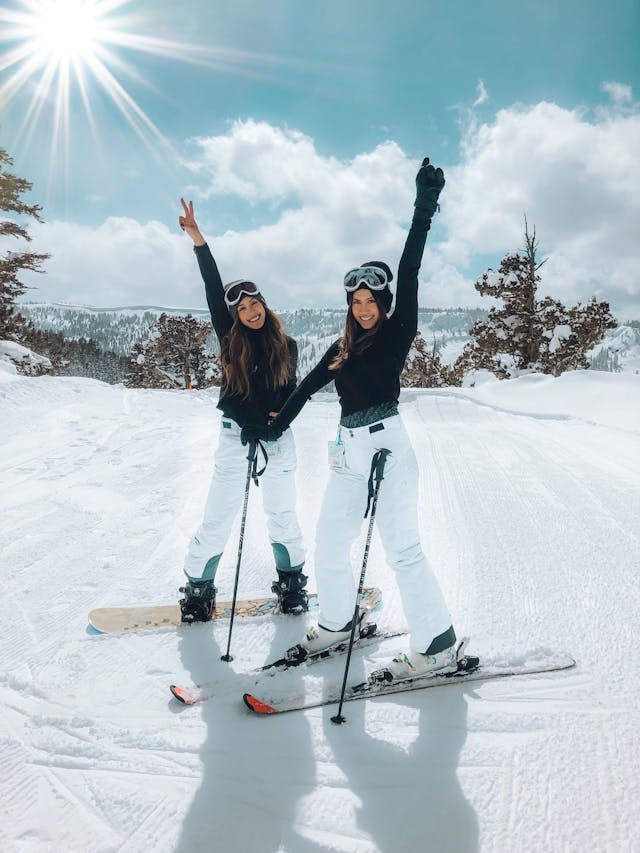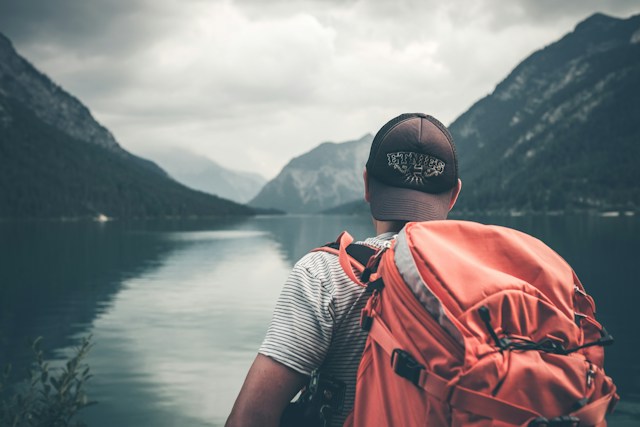With its pristine Alpine landscapes, world-renowned ski resorts, and impeccable hospitality, Austria is an ideal destination for luxury ski trips. From the stunning slopes of St. Anton to the glamour of Lech, Austria has ski resorts perfect for skiers seeking luxurious experiences. Moreover, these resorts offer Michelin-starred dining, personalised services, delightful spas, and après-ski experiences, epitomising relaxation and indulgence.
Here’s everything you need to know about luxury ski trips to Austria.
The Best Time to Go Skiing in Austria
The best time to go skiing in Austria typically falls between late December and early April, coinciding with the peak winter season and optimal snow conditions. December through February is a prime skiing time, with reliable snow cover and chilly temperatures ensuring excellent skiing conditions across Austria’s numerous ski resorts.
January offers some of the best skiing conditions, with fresh powder blanketing the slopes and minimal crowds compared to the holiday season. Moreover, the days are longer, providing ample time to enjoy the vast ski areas and explore the breathtaking Alpine scenery.
March and early April also present fantastic skiing opportunities, especially at ski resorts in higher altitudes, where the snowpack remains well into the spring months. These later months offer the added advantage of longer daylight hours and warmer temperatures, creating ideal conditions for skiing under the bright Alpine sun.
It’s worth noting that specific timing can vary depending on the region and elevation of the ski resort. Higher-altitude resorts like those in Tyrol and Vorarlberg tend to have longer ski seasons than those in the lower-altitude areas.
The Best Things to Do on a Ski Trip in Austria
A luxury ski trip to Austria offers unforgettable experiences amidst breathtaking Alpine landscapes. Here are some of the best things to do:
- Skiing and Snowboarding – Austria boasts world-class ski resorts with diverse terrain suitable for all skill levels, from beginners to expert skiers and snowboarders. Explore vast networks of groomed slopes, challenging mogul runs, and thrilling off-piste terrain.
- Apres-Ski – Austria’s ski resorts are known for their legendary apres-ski culture, where lively bars await with live music, hearty cuisine, and warm beverages. Celebrate a day on the slopes with friends and fellow skiers, soaking in the vibrant atmosphere.
- Enjoy Scenic Chairlift Rides – Take a scenic chairlift or gondola ride to enjoy panoramic views of the snow-capped peaks and picturesque valleys. Many resorts offer chairlift rides, providing opportunities for photography and relaxation.
- Winter Hiking and Snowshoeing – Explore Austria’s winter wonderland on foot with guided snowshoe hikes or winter walking trails. Discover hidden valleys, frozen waterfalls, and serene forests while immersing in the tranquillity of the snowy landscape.
- Spa and Wellness – Unwind and rejuvenate after a day on the slopes at luxurious spa facilities. Relax in saunas, steam rooms, and hot tubs, or indulge in soothing massages and wellness treatments.
The Best Places to Stay When Skiing in Austria
People looking for luxury skiing getaways in Austria will find an unparalleled blend of pristine slopes, alpine charm, and lavish accommodations.
Austria is home to world-class ski resorts offering unique terrain and stunning scenery. Here are some of the best places to stay when skiing in Austria.
- St. Anton am Arlberg – Renowned for its challenging slopes, St. Anton is a mecca for advanced skiers and snowboarders. Its extensive network of runs, including the famous Valluga descent and vibrant apres-ski scene, makes it a favourite among winter sports enthusiasts.
- Kitzbühel – Home to the iconic Hahnenkamm downhill race, Kitzbühel offers a perfect blend of historic charm and excellent skiing. With over 170 kilometres of groomed runs, it caters to skiers of all levels, while its charming town centre provides a picturesque backdrop.
- Ischgl – Known for its lively apres-ski and extensive interconnected ski area, Ischgl offers fantastic skiing and entertainment. Its high-altitude slopes ensure reliable snow conditions well into the spring, while its modern lifts and infrastructure enhance the overall experience.
- Sölden – Renowned for its high-altitude skiing and vibrant nightlife, Sölden boasts two glaciers and over 144 kilometres of pistes. Its modern lift system and challenging terrain attract serious and casual skiers.
- Saalbach-Hinterglemm – One of Austria’s largest ski areas, Saalbach-Hinterglemm offers over 270 kilometres of interconnected slopes. Its diverse terrain, family-friendly atmosphere, and vibrant apres-ski make it a popular choice for visitors of all ages.
The Best Places to Visit for Skiing in Austria
Beyond the exhilarating slopes, you will find many other fantastic places to visit on a luxury ski trip to Austria. Here are some of them:
- Innsbruck and its Surroundings – Explore the charming city of Innsbruck, known for its historic architecture and vibrant cultural scene. Visit the Imperial Palace, the Golden Roof, and the Swarovski Crystal Worlds. Nearby, the Nordkette mountain range offers scenic hikes and panoramic views accessible via cable car.
- Salzburg – Discover the birthplace of Mozart and the setting for “The Sound of Music.” Explore Salzburg’s UNESCO-listed Old Town, visit Hohensalzburg Fortress, and stroll along the picturesque streets with baroque architecture.
- Hallstatt – Journey to the enchanting village of Hallstatt, nestled on the shores of Lake Hallstatt. Admire its fairytale-like scenery, explore the salt mines, and take a boat ride on the tranquil lake surrounded by towering mountains.
- The Grossglockner High Alpine Road- Embark on a scenic drive through the Austrian Alps along the Grossglockner High Alpine Road. Marvel at majestic peaks, cascading waterfalls, and alpine meadows as you traverse this iconic mountain pass.
What to Pack for a Ski Trip to Austria
To help you pack for your luxury ski trip to Austria, refer to this list:
- High-quality ski gear – These include skis or snowboard, boots, poles, and helmet.
Warm and waterproof clothing: Such as insulated jackets, pants, base layers, gloves, and thermal socks.
- Luxury apres-ski attire – Stylish winter clothing for evenings, including sweaters, scarves, and fashionable boots.
- Goggles and sunglasses – Essential for eye protection against snow glare and UV rays.
- Toiletries and skincare – Moisturizers, lip balm, sunscreen, and any personal grooming items.
- Travel documents – Passports, travel insurance, ski passes, and hotel reservations.
- Camera or smartphone – To capture the stunning Alpine scenery and memorable moments.
- Casual attire – Comfortable clothing for leisurely activities, such as dinners, sightseeing, and relaxation.
- Swimwear- For indulging in luxury spa facilities or heated pools at the resort.
- Cash and credit cards – For shopping, dining, and any additional expenses during your stay.



